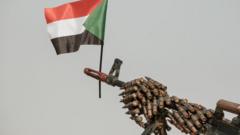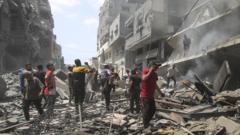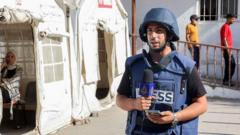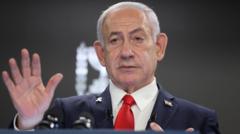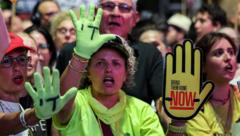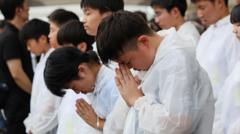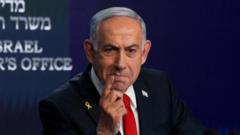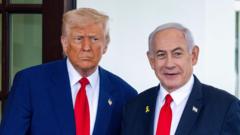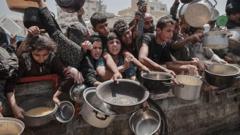On June 23, 2025, heightened tensions between Iran and the United States escalated after a U.S. assault on Iranian nuclear facilities, prompting an emergency meeting of Iran's Supreme National Security Council. According to four Iranian officials familiar with the war planning, the leadership, under Ayatollah Ali Khamenei, did not just want to retaliate but to strategically manage the situation to avoid a larger conflict. The decision was made to strike back while containing any repercussions.
Iran’s Calculated Response: A Strategic Strike Amidst Tensions with the U.S.

Iran’s Calculated Response: A Strategic Strike Amidst Tensions with the U.S.
Following a series of military strikes, Iran delicately maneuvers its response to maintain regional stability while projecting strength.
Iran’s Revolutionary Guards Corps targeted the Al Udeid Air Base in Qatar, which is known as the largest U.S. military base in the region. The choice to strike here was twofold. It was perceived by Iranian officials as an American base pivotal in coordinating the recent bombings of Iranian targets. Meanwhile, the location in Qatar — an ally of Iran — was deemed strategic to minimize potential fallout.
While Iranian media celebrated this action, framing it as a notable success, officials on the ground emphasized the discretion involved in the operation. They maintained that Had the strikes been too severe, it could have provoked a stronger American retaliation, escalating tensions unnecessarily. This calculated approach gives both Iran and the U.S. a possible narrative of victory, with analysts suggesting that this could pave the way for a potential cease-fire and negotiations moving forward.
Overall, the situation embodies a complex dance of power dynamics in a region long fraught with conflict, where all parties are methodically weighing their actions against the backdrop of historical enmities and strategic alliances.
While Iranian media celebrated this action, framing it as a notable success, officials on the ground emphasized the discretion involved in the operation. They maintained that Had the strikes been too severe, it could have provoked a stronger American retaliation, escalating tensions unnecessarily. This calculated approach gives both Iran and the U.S. a possible narrative of victory, with analysts suggesting that this could pave the way for a potential cease-fire and negotiations moving forward.
Overall, the situation embodies a complex dance of power dynamics in a region long fraught with conflict, where all parties are methodically weighing their actions against the backdrop of historical enmities and strategic alliances.




